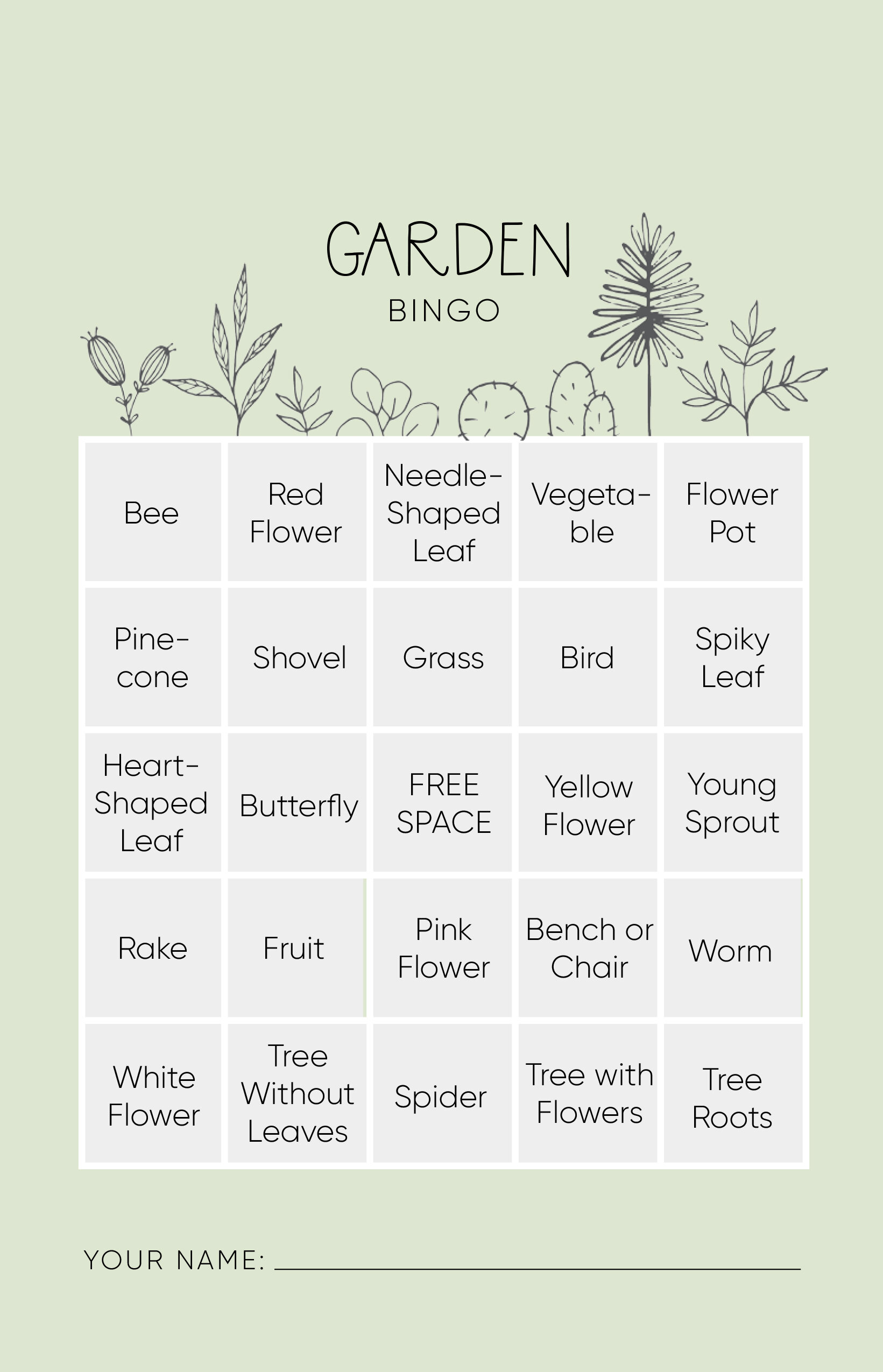How to Make a Kid-Friendly Yard
Thinking about your outdoor living spaces through little eyes creates very different spaces. Speaking from personal experience as parents and designers, here are our tips for planning around baby, toddlers, kids and teens in any size yard. (Find a fun Garden Bingo Freebie at the bottom of the post!)
Pick Sensory Plants
Enjoying the great outdoors is a multi-sensory experience by selecting plants that invite curiosity and play. A few favorites our designers use often for their ornamental value and easy care also make great choices for kids:
Touch: Lambs ear (Stachys byzantina), common sunflowers (Helianthus annuus), and hen & chicks succulents (Sempervivum) are low-water users that are fun to touch.
Smell: Common herbs like rosemary and thyme often have fragrant smells, as do perennials like Butterfly bush (Buddleia davidii) or lavender varieties (Lavandula angustifolia, dentata, or stoechas). Take care to keep these further from play areas, as many sweet-smelling bloomers attract bees).
Taste: Many ornamental landscape plants can also offer experiments in taste. The bitter, but vibrantly colored, fruits of a Strawberry tree (Arbutus unedo) are a fun contrast to the sour seeds in a pomegranate (Punica granatum) or sweet fruits from a pineapple guava (Feijoa sellowiana) shrub.
Or, use veggie garden real estate to plant a “taco garden” with cilantro, tomatoes, jalapenos, and lettuce.
Be sure to teach little ones not to put any part of a plant of their mouth without your supervision. Many plants have parts that are toxic, some that you’d least expect, like the seeds of almond or apricot trees.
Steer Clear of Worrisome Plants
Toxicity is often the most immediate fear for children in a garden, and you may find a surprising number of toxic plants at your local garden center. Be sure to keep kids away from Wisteria, Foxglove, hydrangeas, hollies, Brugmansia, and Oleander, and Delphinium.
You’ll also want to avoid planting prickly or thorny plants like cacti, agave, bougainvillea, or roses anywhere kids can reach.
Prioritize Shade
Keep kids cool — and void the unenviable task of applying sunscreen to disgruntled faces every half hour — with ample overhead coverage from sun and rain. Target zones under larger trees and awnings for new play additions, or add fabric shade sails to exposed areas.
Build In Flexible Features
Kids find a way to make anything a playground. Before committing to a permanent feature, consider how the space can evolve as children grow. Swapping a playhouse for a ping pong table, for example, or keeping a shady area open for easels and slacklining alike. That said, here are a few favorite ideas for various age groups:
Babies
A mix of sensory surfaces like lawn or turf, stones, and sand
Fragrant herbs and flowers
Pinwheels, small fountains, or other animated features
Simple climbing features like stepping stones or furniture cushions
Toddlers
Chalkboards along fences
Balance beams or stepping stones
Water table (swap in sand for the winter)
Elementary Ages
Ninja and obstacle courses
Splash pad
Play structures, playhouses, or freestanding swings
Bowling alley
Personal garden bed
Teens
Sports courts and putting greens
Parkour and slacklining elements
Table games like ping pong, foosball, or shuffleboard
Hideout areas like a treehouse or clubhouse
Check out some of our favorite kid features on Pinterest for more inspiration.
Bring Adaptable Fun to Any Space
No matter the state of your home’s landscape, you can bring adventure and imagination to outdoor spaces. Try these imaginative ideas in any type of outdoor space:
Buy flats of colorful annuals to create a whimsical setting for a garden picnic or tea party
Set up a make-believe farm stand with your week’s produce. Encourage kids to share what fruits and veggies are in season, and how and where they were grown.
Invite children to pretend they are docents at a nature museum, explaining what they know about the plants, animals, and rock features they see in your yard. (Name badges a plus!)
Invest in seasonal pup-ups like inflatable slides, ball pits, and splash pads
Build a birdhouse, fairy house, or owl nest and install it outside of the child’s window
Print our free printable Garden Bingo card, letting kids race to find five in a row.
Do a Safety Check
Take a stroll seasonally around your property to look for any potential hazards. Here are a few dangers we see often:
Maintain wood decks or play structures to prevent rotting and splintering wood
Prevent standing water but dumping water features after use and providing proper drainage around your property
Be sure all fences close automatically and can’t be left open to keep kids from wandering into the street or a neighbor’s pool
Check large trees for any precarious-looking falling limbs a few times a year
Have first-hand advice on planning for a yard with kids? Reach out at hello@yardkit.com to share your thoughts.




